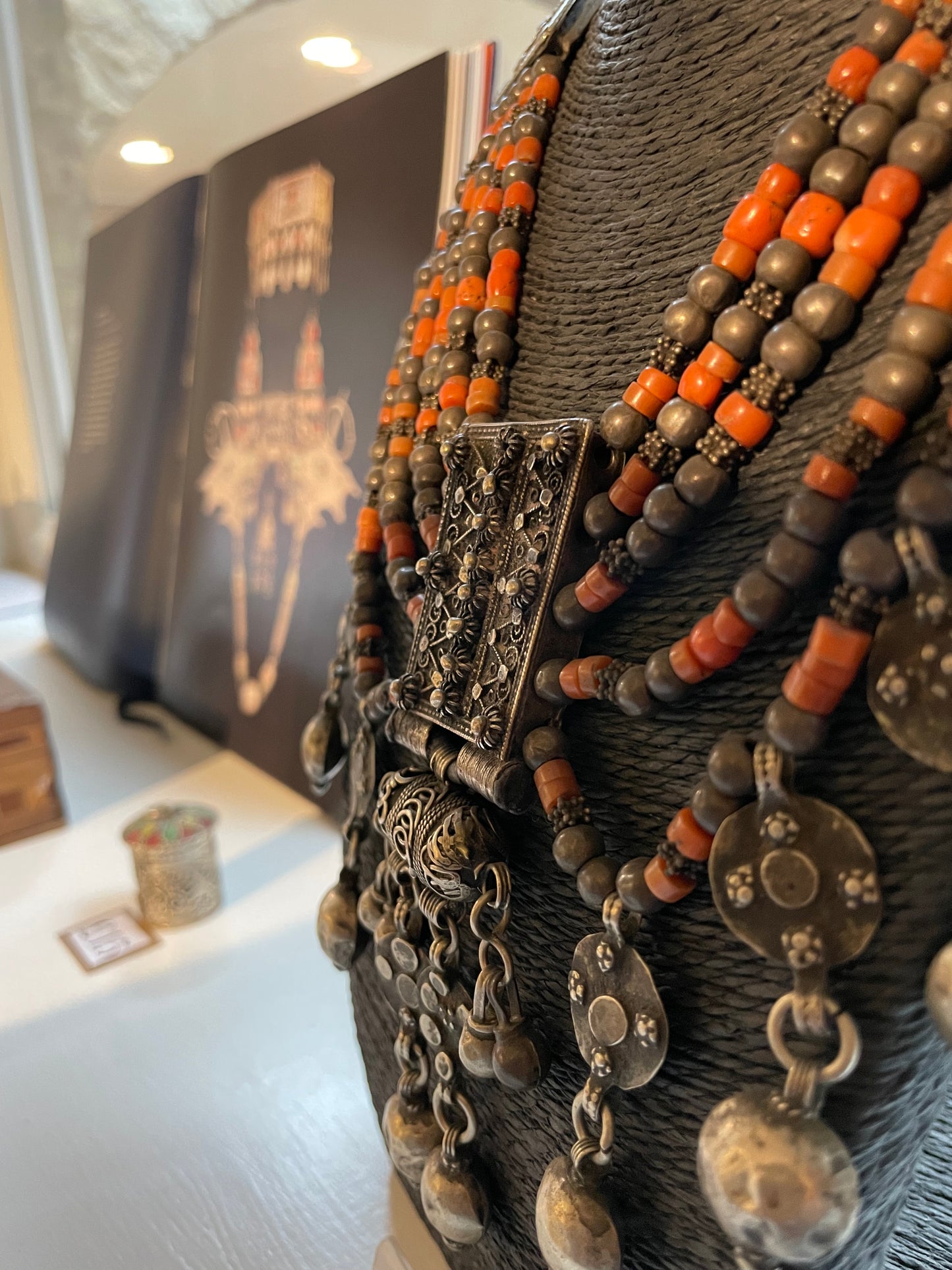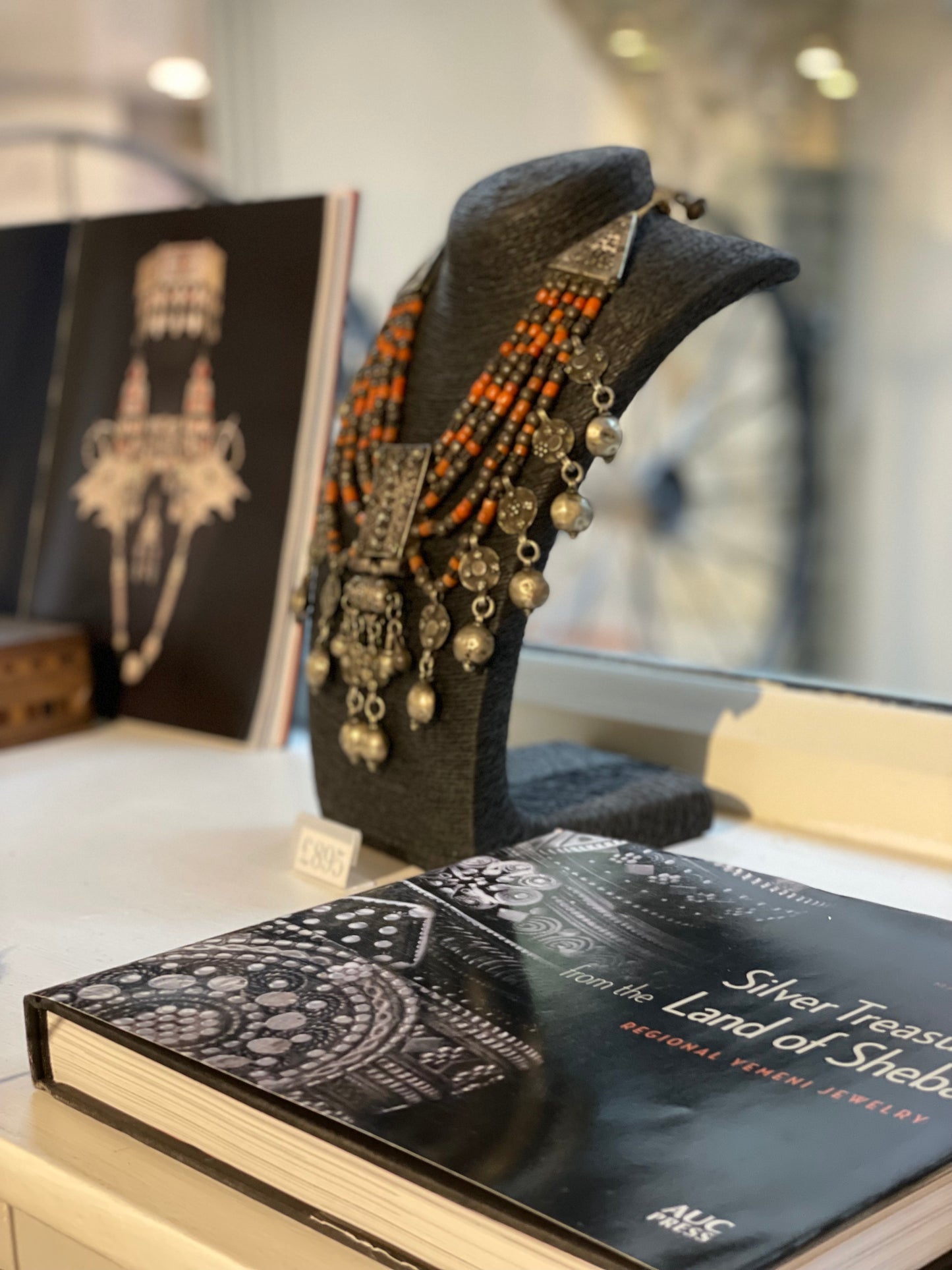Antique Yemenite Bridal Necklace
Antique Yemenite Bridal Necklace
Couldn't load pickup availability
This one-of-a-kind bridal necklace exudes in natural beauty and elegance. Small coral beads sourced from Yemen's extensive coastline enliven the chains with an electric red hue, whilst silver bell 'dangles' are a clear reference to its tribal origins. All these features centre on the rectangular pendant, that displays an intricate 'zig-zag' filagree design, as well as some floral granulation to provide an additional layer of texture. Completed with a cylindrical amulet case underneath, this necklace is imbedded with a profound cultural significance, which helps transform it into a timeless showpiece.
History
History
The art of silversmithing in Yemen has deep, historical roots, stretching as far back as the 1750s. During this period, skilled Jewish artisans began crafting intricate silver jewellery for both Jewish and Muslim communities, with many families building a high reputation in the bustling souks of Sana'a. Over time, they became renowned for their use of complex skills such as filagree and granulation, which were passed down through each generation.
Unlike many other regions, Yemeni Jewellers traditionally favoured silver rather than gold, because the latter was considered a noble metal in Islamic law. However, with the lack of silver reserves in the country, many artisans turned to foreign coins like the 'Maria Theresa Thaler.' Minted in the Austro-Hungarian Empire, these coins were traded for Arabian Coffee and were considered the primary currency of the Red Sea region. With a particularly high silver-content of 84%, they became the the perfect source to melt and mix with other metals, which helped establish a stable supply of material in the process.
Unfortunately, this age-old tradition began to fade away in the mid 20th century as many Yemeni Jews relocated the newly-formed state of Israel. Muslims began to enter the trade, but without the proper knowledge and an increase in mass produced products, the industry declined rapidly.
Despite these recent changes, Yemeni Jewellery has remained a continuous source of pride for communities across the country. Each area has preserved its own unique style, shaped by geographical influences and historical trade routes. For example, jewellery from the west coast of Yemen share visual similarities with those from east Africa, whilst creations from the Hadhramaut are often linked with neighbouring Oman.
Overall, these pieces of Yemeni art carry deep cultural significance. They act as a symbol of social status, and are often presented as part of a bride's dowry gift on her wedding day. Thus, these pieces are not defined as merely decorative; but as an enduring expression of identity to all who treasure them.
Details
Details
Size: -
Age: Early 20th Century
Condition: Very good
Stock No: -
Location
Share




